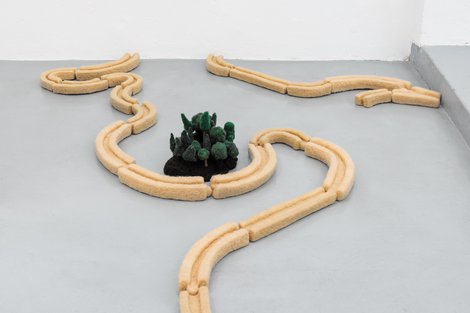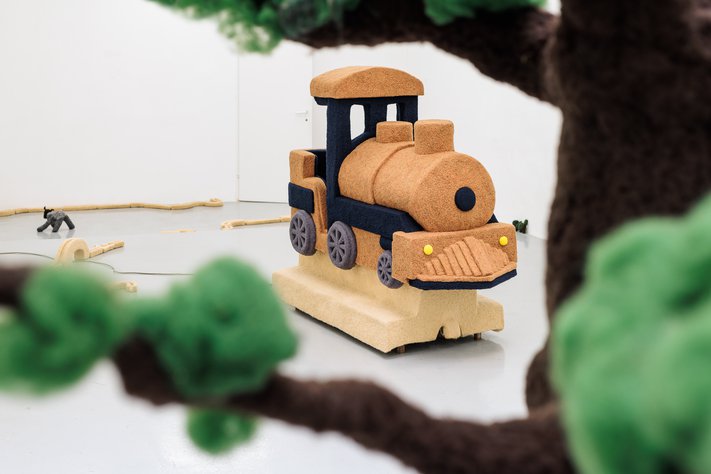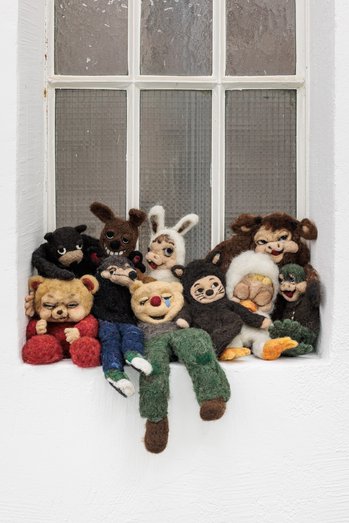Living Rooms
Kiki Furlan
Kiki Furlan
Sensory experiences stay with us, in memory and matter, for indeterminate periods of time. What might otherwise be considered as a mundane sight, commonplace object, or expected experience—belonging to childhood, quotidian rite or one’s sentimental education—somehow lingers in our consciousness only to slowly, eventually, alter the way in which we perceive the world. Such things, like bites of the Proustian madeleine, first loves, and frights, certain stories, and visions, i.e., stuff caught in the net, often in the periphery of immediate experience, gradually come to reveal a location at the more unlocatable ends of the mind—not only as memories or recurring thoughts, nor as mere impressions, resurfacing with indifference in the line of thought, but in more transformative experience of the interruptive return: past sights irrupting in mind as insight.
In Kiki Furlan’s Living Rooms, coin-operated attractions recalled and re-sourced from shopping malls, or other familiar non-sites, like airports, grocery stores, or gas stations are returned from memory’s mist to the exhibition space, dislocated from their ‘proper’ place, function, and use-value, into a context that asks us to re-consider such insights. To twist the meaning of the ride’s inner meaning in the pure fun of homonymic association, viewers are drawn inside the site that grants new life to what’s in sight—on view: namely, the mind, as scripted site, per the attraction. And so, as a kind of “living” room, a space alive with all kinds of uncanny forms, reconstituted from the “real” as material thoughts, in desire’s momentum, the force of the imagination.
In Kiki Furlan’s Living Rooms, coin-operated attractions recalled and re-sourced from shopping malls, or other familiar non-sites, like airports, grocery stores, or gas stations are returned from memory’s mist to the exhibition space, dislocated from their ‘proper’ place, function, and use-value, into a context that asks us to re-consider such insights. To twist the meaning of the ride’s inner meaning in the pure fun of homonymic association, viewers are drawn inside the site that grants new life to what’s in sight—on view: namely, the mind, as scripted site, per the attraction. And so, as a kind of “living” room, a space alive with all kinds of uncanny forms, reconstituted from the “real” as material thoughts, in desire’s momentum, the force of the imagination.
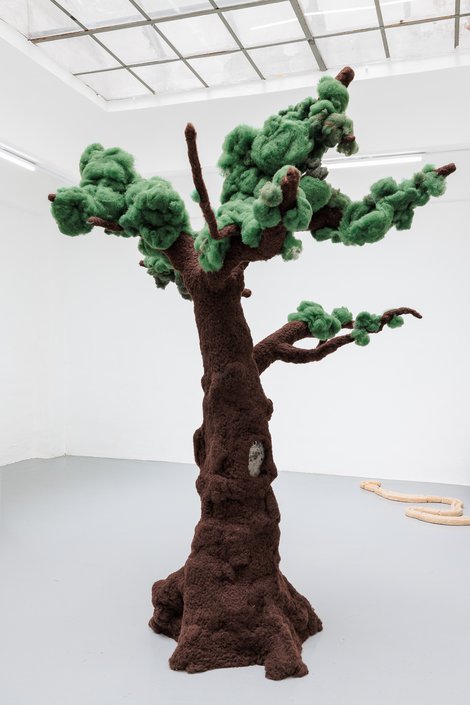
25.04.24—25.05.24
GIANNI MANHATTAN, Wassergasse 14, 1030 Vienna
> Installation views
Sensory experiences stay with us, in memory and matter, for indeterminate periods of time. What might otherwise be considered as a mundane sight, commonplace object, or expected experience—belonging to childhood, quotidian rite or one’s sentimental education—somehow lingers in our consciousness only to slowly, eventually, alter the way in which we perceive the world. Such things, like bites of the Proustian madeleine, first loves, and frights, certain stories, and visions, i.e., stuff caught in the net, often in the periphery of immediate experience, gradually come to reveal a location at the more unlocatable ends of the mind—not only as memories or recurring thoughts, nor as mere impressions, resurfacing with indifference in the line of thought, but in more transformative experience of the interruptive return: past sights irrupting in mind as insight.
In Kiki Furlan’s Living Rooms, coin-operated attractions recalled and re-sourced from shopping malls, or other familiar non-sites, like airports, grocery stores, or gas stations are returned from memory’s mist to the exhibition space, dislocated from their ‘proper’ place, function, and use-value, into a context that asks us to re-consider such insights. To twist the meaning of the ride’s inner meaning in the pure fun of homonymic association, viewers are drawn inside the site that grants new life to what’s in sight—on view: namely, the mind, as scripted site, per the attraction. And so, as a kind of “living” room, a space alive with all kinds of uncanny forms, reconstituted from the “real” as material thoughts, in desire’s momentum, the force of the imagination.
In Kiki Furlan’s Living Rooms, coin-operated attractions recalled and re-sourced from shopping malls, or other familiar non-sites, like airports, grocery stores, or gas stations are returned from memory’s mist to the exhibition space, dislocated from their ‘proper’ place, function, and use-value, into a context that asks us to re-consider such insights. To twist the meaning of the ride’s inner meaning in the pure fun of homonymic association, viewers are drawn inside the site that grants new life to what’s in sight—on view: namely, the mind, as scripted site, per the attraction. And so, as a kind of “living” room, a space alive with all kinds of uncanny forms, reconstituted from the “real” as material thoughts, in desire’s momentum, the force of the imagination.
Furlan’s coin-operated shopping mall kiddie-rides, animatronic locomotives, and felted fores ts, ask for a penny for our thoughts. Plunk the proverbial coin into the exhibition’s cognitive machinery to find the mind set in motion, en route to a place inside the attraction’s insights, its sight-lines, particular perspectives, and incorporated ideas. These are rides once upon a time really experienced, then internalized as thought; rides, here summoned from their own obsolescence, real storage lockers and the mists of memory alike, to revive a past life of wondrous transports and drifts. Over-turned in Furlan’s mind into thought-objects, objects of contemplation, these sculptures isolate the attraction as a poetic device: an expressive machine, proposing an imagined language of arrested motion.

Rides draw near questions of duration, scale, and space, no doubt. But, more precisely, Furlan’s sculptural attraction, as sites, draw into proximity forms of life imagined, or intuited, in the simple, rote mechanic of the familiar image. These sculptures, fantastically ordinary objects in the end, move the mind to the trope—that is, to the eternal return of the familiar expression, forever slipping inside its own system of meaning, towards alternate ideas in reception, new meanings spun in the poetics of what moves the mind to make something.
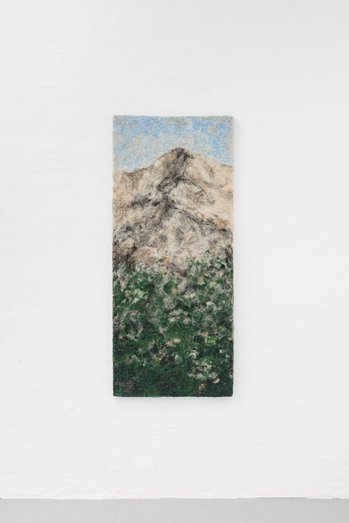
In Living Rooms, Furlan’s mind’s rides are re-animated in the real with the sin of literalism. In her installations, psychosocial spaces are collapsed into imagined localities, the insignia of shopping mall kiddy corners and airport Fun Zones into measures of aesthetic perimeter, and allusions to domestic spaces with expressive habitats—per the titular mistranslation of the German Lebensraum: a tricky term designating the biotope, overturned in time as an expression of geopolitical intent. To be clear, the scenes staged in this exhibition move us into the visual site, only to bring our attention to the invisibles inside: the near-imperceptible lines between inside and outside space, views from within and without forms of language, the emotional teetering between frames of thought, which amass over time into an understanding of an object’s life inside our minds—for all the possible ‘reals,’ reeling in emotions, desires, and imaginative expressions.
These cabooses choo choo into the semantic associations between locomotion, locution, and locality, to articulate the attraction as analogous to the ceaseless movement of language, and the ever-elusive place of meaning. The forests of the imagination, perhaps.
–Text by Sabrina Tarasoff
These cabooses choo choo into the semantic associations between locomotion, locution, and locality, to articulate the attraction as analogous to the ceaseless movement of language, and the ever-elusive place of meaning. The forests of the imagination, perhaps.
–Text by Sabrina Tarasoff
